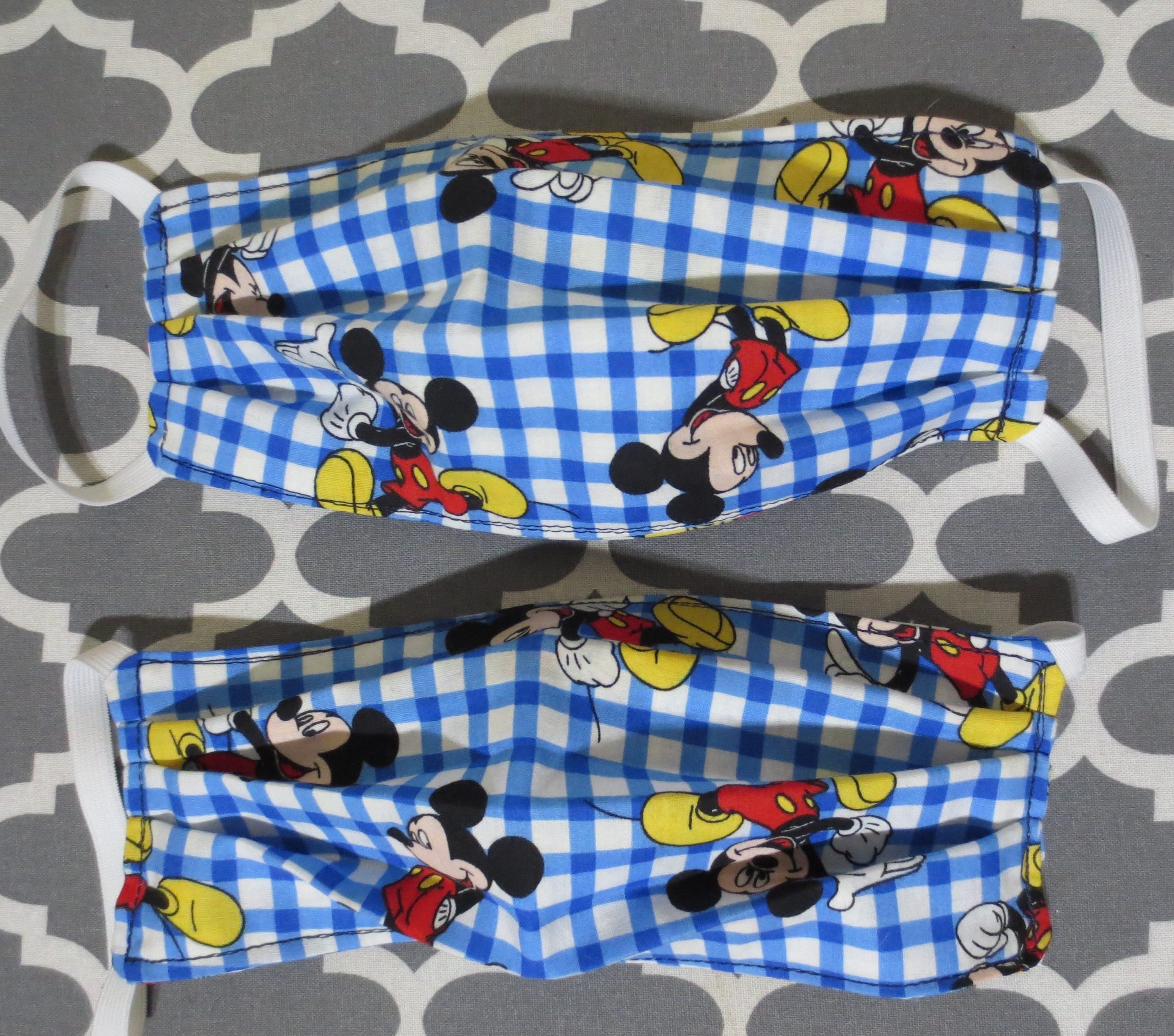
Over the last few weeks, I’ve made many cloth face masks using a variety of patterns. Here’s a rundown on the different mask styles I’ve tried, and the one I find overall the most useful.
Contoured masks
The first are heavily contoured, shown here. If they fit they work well, although even without an added filter they make it hard to breathe. The downside to them being contoured, though, is that, if they don’t fit just right, they gap worse than the pleated-styles of masks I’ve tried.
Pleated mask with pockets
Another style of mask I made is a simple pleated mask with two layers of cotton fabric. One piece of the cotton was interfaced and had a wire in the top to shape around the wearer’s nose. Interfacing offers some added filtration on its own. The two layers were left open at the top to form a filter pocket. You can find the complete tutorial for this style here.
I’ve worn this style for the past few weeks on my weekly grocery shopping trips without an added filter. I’m generally healthy and don’t have any breathing problems, but I find these masks difficult to breathe through. Some discomfort is tolerable for safety, but every time I’ve worn one, I’ve had moments where I wasn’t sure if I’d be able to finish shopping while wearing it. On one occasion, I felt sick from it and actually had to stop and briefly remove it to get a few deep breaths.
Basic pleated mask
The final mask design I’ve tried is a simple, pleated mask. I use the pattern provided by Deaconess Hospital. They have variations for using elastic or fabric ties. In addition to the pdf instructions, Deaconess filmed a video tutorial that is easy to follow.

There are a few downsides to this pattern. Depending on the wearer, these may gap. On some, I added a small dart at the nose and chin. This helps provide a better fit. They also lack a filter pocket or interfacing. Even so, this is my preferred mask pattern for the following reasons.
They are easy to make.
This simplicity makes it easy to make multiples in a short amount of time. Once I have my fabric cut, it takes me about 15-20 minutes to make two in assembly line style. Having several means you’re more likely to wash them after every single use. It also means you can keep a backup in your car or bag so that you always have one to use.
They are easy to customize.
If you want to add a layer of interfacing, or nose and chin darts, you can without much additional effort. Searching Deaconess mask plus nose wire or filter pocket yields options for those as well.
They offer some protection while being more breathable.
Depending on your fabric selection, even a simple two fabric layer mask like these can offer up to 79% filtration, according to testing. Breathability also means you’re more likely to wear them and less likely to remove them during use.
Have you made masks lately? What is your preferred pattern? Please share in the comments.
Like this post? To make sure you never miss a future post, please sign up for my newsletter. Current newsletter subscribers:There’s been a glitch with my sender. If you signed up before May 5, 2020, I will need you to sign up again to continue to receive my weekly newsletter. I apologize for the inconvenience.


[…] Another Cloth Mask Pattern Post was originally published on SubEarthan Cottage […]